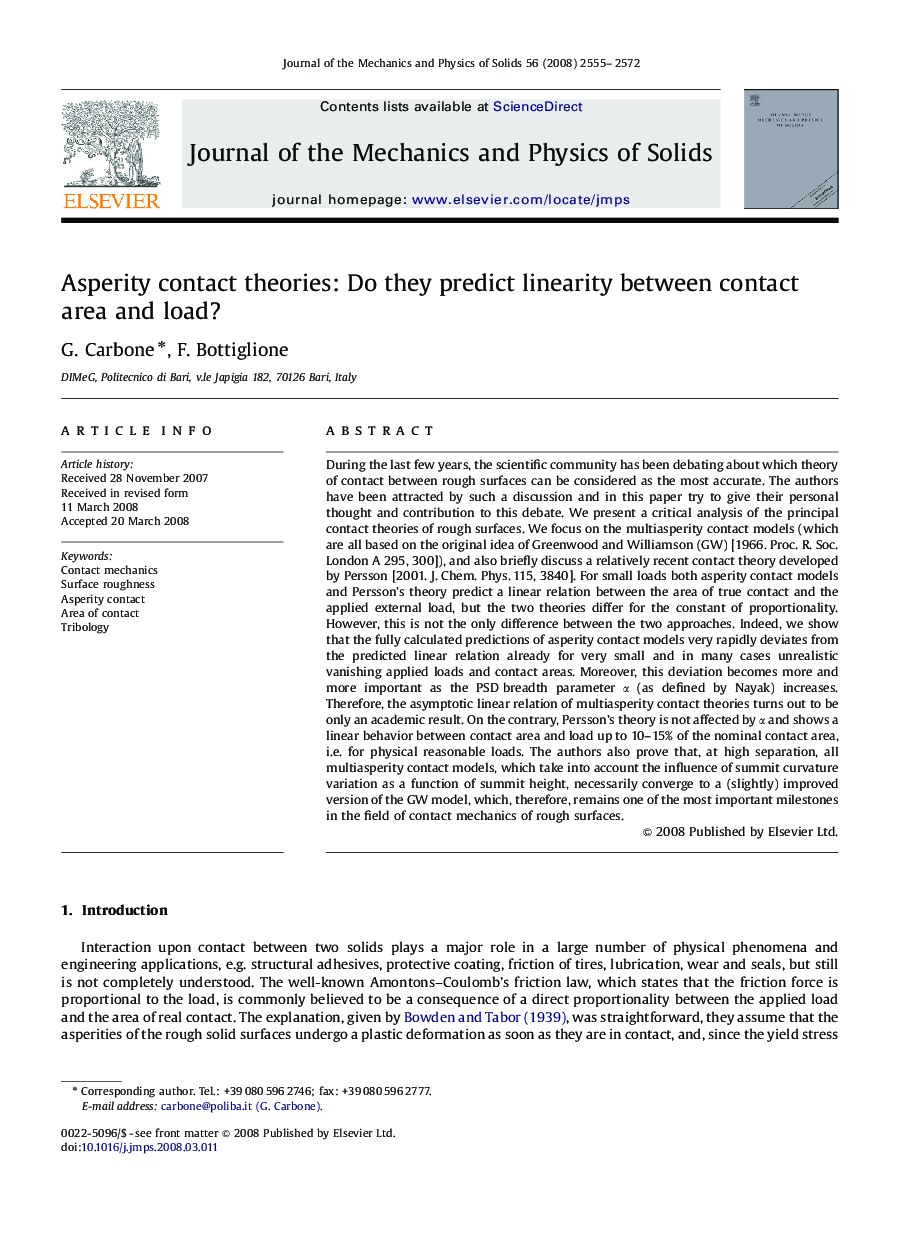| Article ID | Journal | Published Year | Pages | File Type |
|---|---|---|---|---|
| 796935 | Journal of the Mechanics and Physics of Solids | 2008 | 18 Pages |
During the last few years, the scientific community has been debating about which theory of contact between rough surfaces can be considered as the most accurate. The authors have been attracted by such a discussion and in this paper try to give their personal thought and contribution to this debate. We present a critical analysis of the principal contact theories of rough surfaces. We focus on the multiasperity contact models (which are all based on the original idea of Greenwood and Williamson (GW) [1966. Proc. R. Soc. London A 295, 300]), and also briefly discuss a relatively recent contact theory developed by Persson [2001. J. Chem. Phys. 115, 3840]. For small loads both asperity contact models and Persson's theory predict a linear relation between the area of true contact and the applied external load, but the two theories differ for the constant of proportionality. However, this is not the only difference between the two approaches. Indeed, we show that the fully calculated predictions of asperity contact models very rapidly deviates from the predicted linear relation already for very small and in many cases unrealistic vanishing applied loads and contact areas. Moreover, this deviation becomes more and more important as the PSD breadth parameter αα (as defined by Nayak) increases. Therefore, the asymptotic linear relation of multiasperity contact theories turns out to be only an academic result. On the contrary, Persson's theory is not affected by αα and shows a linear behavior between contact area and load up to 10–15% of the nominal contact area, i.e. for physical reasonable loads. The authors also prove that, at high separation, all multiasperity contact models, which take into account the influence of summit curvature variation as a function of summit height, necessarily converge to a (slightly) improved version of the GW model, which, therefore, remains one of the most important milestones in the field of contact mechanics of rough surfaces.
